Treating strategic tech sourcing as a specialism in Higher Educationucation
.png/fit-in/700x9999/filters:no_upscale())
A call was issued to UCISA members across institutions to take part, and since then the working party has looked at the whole procurement lifecycle, worked on a toolkit for using frameworks, explored other routes to market and led a sector wide response to the Government's green paper on transforming public procurement.
As an extension of this, UCISA, as one of the founding partners of the inaugural Ahead by Bett, a new section at the annual education-tech trade event, Bett, dedicated to Higher Education, ran a roundtable headlined 'Treating Strategic Tech Sourcing as a Specialism in HE to Deliver in the Digital Age'.
The objective was to gather feedback from IT leaders, procurement specialists and HE tech providers on the opportunities and challenges with sourcing technology in a rapidly developing marketplace. This write-up describes the'six key findings'of this roundtable session and how they relate to flexible processes, pragmatic governance, and a deeper understanding of IT sourcing skillsets.
UCISA Roundtable scope
The UCISA roundtable took place on the opening day of Bett, the first in-person Bett event since January 2020, and the launch day of the Ahead by Bett. The roundtable was held in the Collaboration Space, a forum designed for in-depth discussion with a podium, a big screen and three roundtables, hosted by Community Manager Chantelle Wilkinson.
Given that technology is constantly developing at a fast pace while being fundamental to delivering teaching and learning, the roundtable session explored both current challenges and opportunities to improve how institutions can embolden their IT teams to have dynamism, and considered the following topics:
- Can continuous supplier engagement assist HEIs in market intelligence and innovation?
- What additional value can HEIs receive through longer-term contracts with IT providers?
- How can the sector overcome internal challenges to improve their tech services at the pace required?

Output of Roundtable
There was a high-level of engagement in the session and the roundtables found there were common themes from IT leaders and IT procurement specialists in the sector, as well as partners hoping to work more with, HE institutions, that spread across all three of the above topics.
In summary, there were some key takeaways from roundtable contributors, which have been categorised in following six areas:
1. Sector IT Procurement Skills Gap
Several contributors thought there was a gap in the standard of specialist IT procurement skills in HE compared to other sectors, with a shortfall in both fully understanding and assessing commercial opportunities and risk, and also in being able to deliver strong contracts with the right partners at the pace required in a quickly evolving market.
There was a consensus that the cost for institutions that don't have IT procurement specialists owning delivery are high, both in failing to get the best value in spend, but also the knock-on effects of service delivery by not getting the right contracts in place.
2. Commercial resource to be in embedded in IT
IT leaders in HE who had experience of leadership in other sectors noted it was unusual that many institutions didn't have commercial resource embedded in IT, whereas one institution involved in the session led the way with a team of five IT procurement specialists all of whom are part of the IT directorate.
There was a recognition that tech sourcing strategy must come from IT/IS/digital leadership teams, where considerations including contractual risk, resource, enterprise architecture, whole life costs, roadmap, transition, exit strategies and compliance are all assessed holistically. Where revenue budgets allow, further specialists, such as licencing managers and resource dedicated to contract renewals, would deliver additional value.
Where full autonomy doesn't extend to ownership of delivery, there is a requirement for procurement teams to follow the models in high-performing sectors and act as a business partner to IT. They should regularly engage with IT Commercial leads and execute a tech sourcing strategy, with regular reporting and a commitment to meeting SLAs for response and delivery.
3. Effectively using appropriate sourcing routes
There are multiple sub-categories of IT and also multiple market dynamics; contributors in the session noted that a more agile thinking approach when considering routes to market when deciding the sourcing strategy could lead to an improvement in the quality of the final contract.
Sector frameworks have specific benefits, particularly in allowing quick mini-competitions in pools where suppliers in specific markets are small, such as Accommodation software platforms; for other markets, where offerings and providers change at pace, there was widespread feeling from contributors in the session that procurement teams without specialist IT resource have a habitual preference to award directly against a framework, based on easy route to being compliant and achieving paper-based savings. Contributors felt solely relying on direct awards in these circumstances often led to poorer contracts than otherwise available, that do not deliver best value for the organisation.
Examples of this included procurement teams issuing contracts going to sector software resellers that effectively added a mark-up for resale, which came out of IT budgets, but added no value and had no commitments in service delivery; these type of direct awards ignored two better alternate sourcing strategy options of either (a) developing a direct contractual relationship with the supplier of the service or (b) contracting to a larger 'Value Add Reseller', who deliver better value through larger buying power, vendor relationship management and economies of scale, having not being restricted by sector or territory, and have skilled resource and a mature service delivery regime that adds real value.
Another drawback of not fully considering all options for sourcing are the barriers to new entrants, which many of the contributors noted held HE back, as tech is constantly developing. A reliance on depending on a fixed pool of suppliers, who will have been awarded a place on a long-term agreement based on responses to a small group of volunteers available at the time, leaves institutions who are without specialist IT commercial resource leading souring strategy vulnerable to missing out on innovation that would add value, including markets outside of the UK.
One experienced IT Director involved in the roundtable summarized this part of the conversation saying, 'paperwork and checklists don't add value.'

4. Commercial specialists leading continuous market engagement add value
There was an identification that a centralised view of tech suppliers and markets is needed across most HE institutions to give a view of potential value. In addition to formal contract management, an institute's commercial lead can drive market engagement in order to understand market trends, allowing benchmarking and ideas from outside the sector that can in turn lead to an early exposure to innovation.
Experienced tech commercial specialists owning continuous supplier relationships, outside of formal contract management, de-risk the threat of lock-in either with technology or supplier, while allowing HE institutions to benefit from intelligence on supplier strategy, including strategic objectives and motives, while allowing the customer, who has a full understanding of the IT roadmap, to influence the market.
There was a recognition that broader market information shared in the HE sector, by organisations including UCISA, assist the work of individual organisations.
5. Longer-term contracts are advantageous aligned with Supplier Relationship Management
There was an understanding that longer-term contracts awarded after suitable due diligence can be advantageous for both parties, allowing for strategic partnerships, longer-term objectives and win-win scenarios, with institutions particularly benefiting from a supplier having the confidence to invest in learning specific knowledge of the institution, including complex IT estates.
However, for maximum benefit, institutions should have both named business and commercial owners of a contract, while adopting an approach that drives continuous improvement, where contract management monitors performance and constantly benchmarks and there are exit plans in place if required.
Customer terms and conditions are preferable to framework and supplier contracts in this regard, with benchmark clauses, an exit schedule and clear service delivery commitments.
Feedback from the roundtables noted that budgets should cost in supplier relationship management (SRM), with whole life costs taking into account the added value and risk management experience IT SRM bring. Other calculations when determining the length of award of a contract should include cost of transition.

6. Risk-averse nature detriment to tech may come from being institutionalised
A re-occurring issue during the session was the belief that the sector itself is too risk averse to adapt as required to constantly evolving markets in the digital age.
One contributor, long experienced in the sector and with a specialised IT procurement background, gave an example of this, explaining how some long-term IT personnel that only know their institution, and so are locked in to particular vendor products that there is a resistance to innovation from other vendors. The same scenario was applied to cosy relationships with long-term resellers, whose account teams focus on targeting HE, and have developed a series of customers in the sector that are plotted as cash cows in their business model and as a result don't deliver best value.
These risks would be mitigated by IT commercial leads both owning existing contracts and also embarking on continuous market engagement, as set out above.
But contributors in the session also noted these institutional failings are prevalent in procurement, with internal policies that are more restrictive than they need to be, IT leaders having less agency than they would in other regulated sectors and a fixed mind-set that doesn't serve either the institution or the requirements of delivering IT services and infrastructure well.
Some of the contributors noted that culture change is required, both with tech leadership being a decision make in strategic direction and procurement in the sector being transformed to be fit to deliver the right services on the strongest contracts at the best overall value.
Next steps
The output from these conversations will be taken up by a renewed Transforming IT Procurement Group, which will be a sub-group of the new UCISA Procurement Group, which became a full group within the UCISA structure at the end of 2021.
UCISA moderators at the Ahead by Bett Roundtable:
- Mel Gomes'' Head of IT Commercial Management and Contracts, Royal Holloway, University of London
- Kate Ferguson-Best'' Head of IT Commercial Management, Kingston University of London
- Rob Moore'' IT Procurement Manager, Leeds Beckett University
Author
 Mel Gomes leads on IT commercials, supplier management, contracts and procurement strategy. With over 20 years of experience, Mel'has delivered services and solutions which have increased value, improved performance and reduced total cost ownership, across both public and private sectors, in verticals including distribution, education, energy, finance, healthcare, retail, telecoms, third-party logistics and utilities.
Mel Gomes leads on IT commercials, supplier management, contracts and procurement strategy. With over 20 years of experience, Mel'has delivered services and solutions which have increased value, improved performance and reduced total cost ownership, across both public and private sectors, in verticals including distribution, education, energy, finance, healthcare, retail, telecoms, third-party logistics and utilities.
Mel also sits on the'Ahead by Bett Advisory Board'helping us shape the programmes to ensure we are meeting the needs of our visitors and exhibitors.
'
Tags
- being
- bett
- both
- commercial
- contracts
- contributors
- deliver
- institutions
- management
- market
- procurement
- resource
- roundtable
- sector
- session
- sourcing
- specialists
- supplier
- tech
- ucisa
- value


)
)
)
)
)
)
)
)
)
)
)
)
)
)
)
)
)
)
)
)
)
)
)
)
)
)
)
)
)
)
)
)
)
)
)
)
)
)
)
)
)
)
)
)
)
)
)
)
)
)
)
)